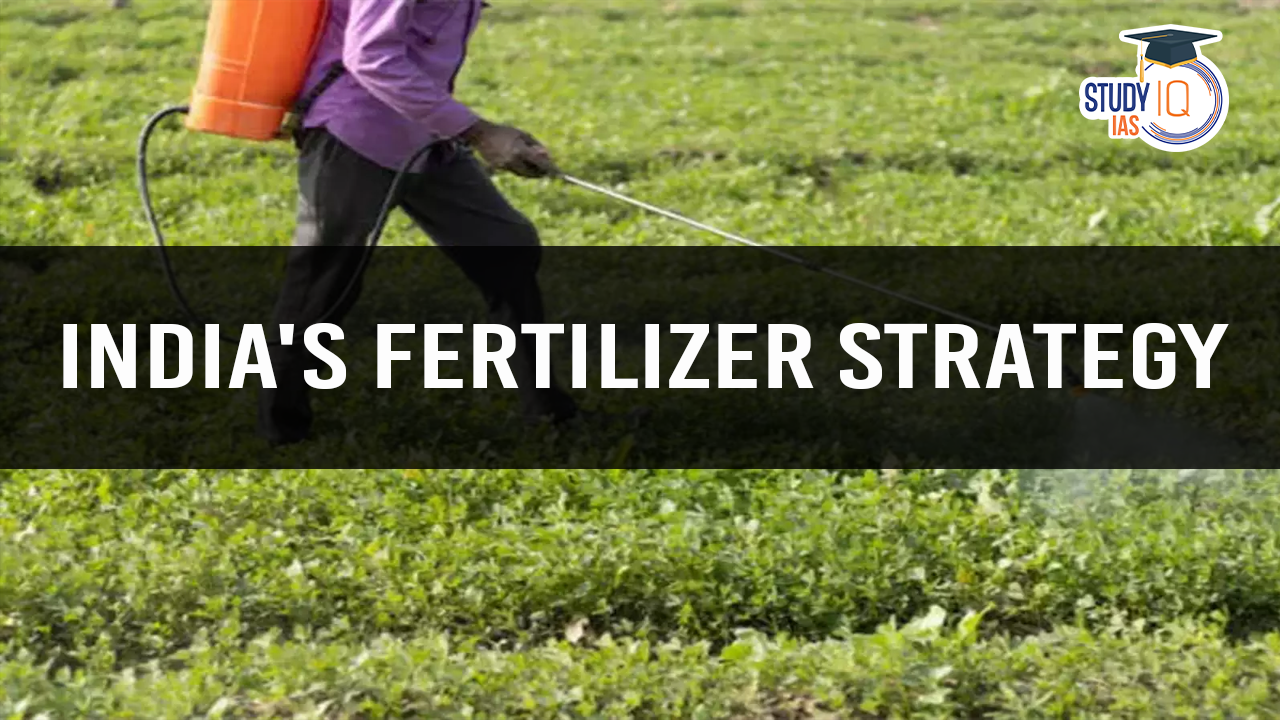Table of Contents
Context: India’s agricultural sector is heavily reliant on chemical fertilizers, particularly urea, di-ammonium phosphate (DAP), and muriate of potash (MOP).
Why India Needs to Cut DAP, Urea, and MOP Consumption?
Heavy Import Dependence
- MOP (Muriate of Potash): 100% imported from countries like Canada, Russia, and Jordan.
- DAP (Di-Ammonium Phosphate): Imported as finished fertiliser and raw materials from Saudi Arabia, China, Morocco, etc.
- Urea: While 85% is domestically produced, its manufacturing depends on imported Liquefied Natural Gas (LNG) from Qatar, the US, and the UAE.
- Rupee Depreciation Impact: Rising import costs put pressure on India’s forex reserves.
High-Analysis Fertilisers Lead to Imbalanced Nutrient Use
- Urea (46% Nitrogen), DAP (46% Phosphorus + 18% Nitrogen), and MOP (60% Potash) provide excessive single nutrients.
- This leads to soil degradation and reduces crop productivity over time.
- Crops require balanced fertilisation with secondary (Sulphur, Calcium, Magnesium) and micronutrients (Zinc, Iron, Boron, etc.).
Financial Burden of Fertiliser Subsidies
The government provides massive subsidies to keep prices affordable.
- DAP Subsidy: ₹21,911 per tonne + ₹3,500 special concession.
- Urea Subsidy: Even higher, making urea overused by farmers.
- Reducing consumption would cut the subsidy burden on the exchequer.
Strategies to Reduce Dependence
Indigenous Production
- Utilizing India’s natural resources, such as phosphate rock in Rajasthan, to boost domestic fertilizer production.
- Encouraging investments in urea, phosphatic, and complex fertilizer production under initiatives like ‘Atmanirbhar Bharat’.
Balanced Fertilization
Encouraging the use of complex fertilizers like 20:20:0:13 (ammonium phosphate sulphate) as alternatives to DAP.
| Examples of Alternatives |
|
Improve Nutrient Use Efficiency
- Use of Nano Urea: Reduces traditional urea application while increasing efficiency.
- Drip Irrigation + Fertigation: Reduces wastage and ensures precise nutrient delivery.
- Neem-Coated Urea: Slows nitrogen release, improving absorption.
- Farmer Awareness & Training: Train farmers on Integrated Nutrient Management (INM) for sustainable soil fertility.
- Promote agro-advisory services for real-time guidance on fertiliser application.
- Strengthen Krishi Vigyan Kendras (KVKs) to educate farmers on alternative fertilisers.


 Regional Rural Banks in India, Objective...
Regional Rural Banks in India, Objective...
 Micro, Small and Medium Enterprises (MSM...
Micro, Small and Medium Enterprises (MSM...
 Universal Basic Income (UBI), Need, Adva...
Universal Basic Income (UBI), Need, Adva...





















